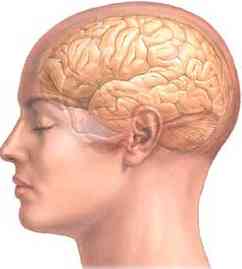Permanent alopecia
after cranial irradiation: Dose–response relationship
Lawenda BD, IJROBP 2004; 60: 879-887
One of the troubling complications resulting from cranial irradiation is permanent
alopecia. The psychological effects of being diagnosed with cancer and the subsequent
treatments are tremendous burdens on our patients. Hair loss is one of the most stressful
side effects for patients undergoing oncologic treatment with either chemotherapy or
cranial irradiation.
Temporary alopecia is a dose-dependent treatment effect that occurs in humans
approximately 2–3 weeks after radiation exposure and usually resolves within 2–3
months after completion of radiotherapy (RT).. Doses as low as 2 Gy in a single fraction
have been shown to cause temporary alopecia.. The historical data from the atomic bomb
survivors in Hiroshima indicated that epilation was noted with estimated doses of only
0.75 Gy. The doses reported to cause permanent hair loss vary widely. A recently published
analysis documented that a dose of 36 Gy (2 Gy/fraction, 5
d/wk) was reported to cause permanent alopecia in a range of 0–80% of patients (median risk, 5%) and that a dose of 45 Gy
resulted in a risk of 5–100% (median, 15%) of permanent
alopecia.. International Commission on Radiological Protection Publication 85 has stated
that permanent epilation occurs at 7 Gy (single fraction).. In this paper, we present a
dose–response relationship analysis for alopecia persisting at least 12 months after
completion of a course of fractionated cranial irradiation.
The D50, the follicle dose at which 50% of the patients developed permanent alopecia, was estimated to be 43 Gy. No statistically significant
difference was found in the D50 between patients who received radiosensitizing
chemotherapy agents (i.e., cisplatin, temozolomide, and carboplatin) vs. those who
received agents that were not radiosensitizing . Radiation dose–response relationship
for permanent alopecia; 95% confidence interval of dose D50 see graph.
Typical Side
Effects (Consent Form) from the RTOG
RADIATION THERAPY ONCOLOGY GROUP/RTOG 0420
A PHASE II STUDY OF RADIATION THERAPY
PLUS LOW DOSE TEMOZOLOMIDE FOLLOWED BY TEMOZOLOMIDE PLUS IRINOTECAN FOR GLIOBLASTOMA
MULTIFORME
Risks Associated with Radiation Therapy
Common (more than 10 out of 100 patients
Temporary partial hair loss with some areas of permanent hair loss
Headache
Fatigue Sleepiness
Dry mouth
Altered sense of taste
Scalp redness or soreness
Uncommon (more than 1 but
less than 10 patients out of 100)
Hearing loss, Dryness of the ear canal and redness of the external ear if
in radiated area
Rare (less than 1 out of 100 patients)
Eye injury resulting in blindness
Mental slowness, behavioral changes
Severe damage to normal brain tissue that may require additional surgery
Brain swelling in the area receiving the radiation therapy
Seizure
Typical Side Effects (Consent Form) from the
RTOG (RADIATION THERAPY ONCOLOGY GROUP.RTOG 0320)
Risks Associated with Whole Brain
Radiation Therapy:
(Both temozolomide and gefitinib could make the radiation side effects
worse.)
Likely
• Scalp redness or soreness
• Hair loss
• Dry mouth or altered taste
• Fatigue, sleepiness
• Muffled hearing (temporary)
Less Likely
• Fever, chills, heavy sweating
• Upset stomach, nausea and/or vomiting
• Loss of appetite, taste changes
• Headaches, seizure, weakness
Rare, But Serious
• Permanent hair loss
• Hearing loss
• Eye injury resulting in blindness
• Mental slowness, behavioral changes
Risks of Radiosurgery:
Likely
• Pin site soreness for a day or two
Less Likely
• Brain swelling, which may cause any prior or existing neurologic symptoms to get
worse
• Muffled hearing (temporary)
Rare, But Serious
• Radiation necrosis, which can cause brain swelling months later |



